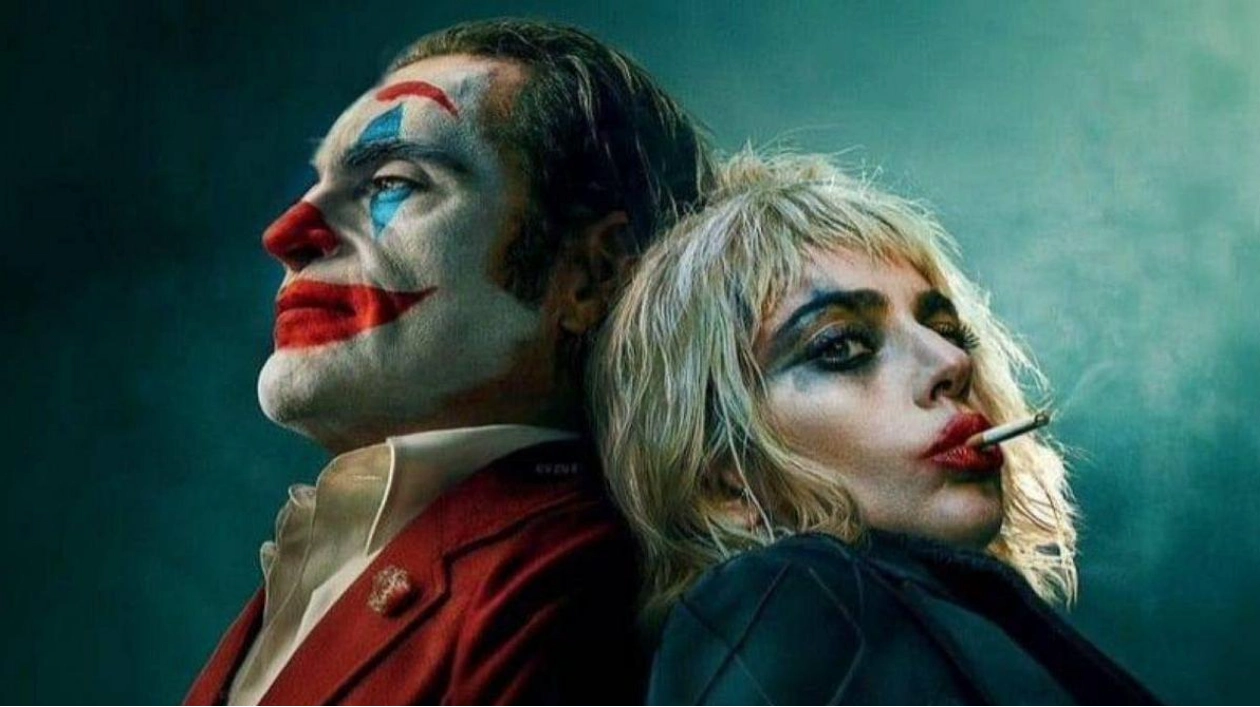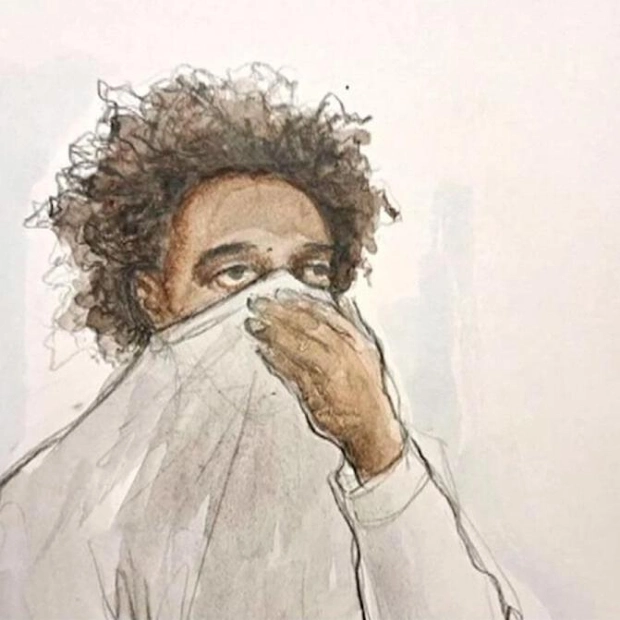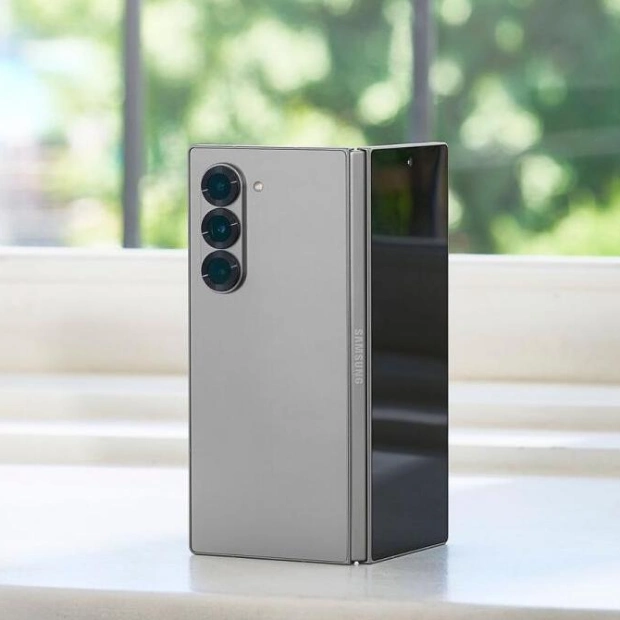“Enough from the clown!” shouted the exasperated mob boss Gambol in Christopher Nolan’s The Dark Knight. How insightful and prophetic of the gangster, who undoubtedly would have stormed out of a screening of Joker: Folie À Deux – had he not been killed by Heath Ledger’s Clown Prince of Crime in the 2008 film. Indeed, the highly anticipated sequel to Todd Phillips’ Golden Lion and Oscar-winning movie is here and... Well, it's less of a triumphant return and more of a clumsy stumble. We find Arthur Fleck (Joaquin Phoenix) in Arkham Asylum, awaiting trial for the murder of five people, and enrolled in a music therapy class... Because that’s apparently the reward for taking your meds and behaving. There, he meets Harleen “Lee” Quinzel (Lady Gaga), an arsonist who is a big fan of Joker. She isn’t afraid to lie when necessary, enjoys playing with matches, and has everything figured out. The duo embark on a tumultuous romance, interspersed with Golden Age Hollywood hits. Despite Phillips’ claims, his sequel is a musical. Sort of. Just a half-baked one.
“I love her,” Arthur confides about Lee. “She understands me.” Does she, Arthur? Or is she merely flirting with you, playing you for a fool? Joker: Folie À Deux begins promisingly with an homage to Looney Tunes. We are treated to a cartoon titled ‘Me and My Shadow’, the first of many dichotomy references, as it becomes clear that the titular folie may not be the shared delusion between Arthur and Lee, but the power struggle between Arthur and his Joker alter-ego. This is certainly the multiple personality disorder defense that Arthur’s lawyer (Catherine Keener) is pushing as the “Trial of the Century” approaches. Kudos must be given for the fact that Joker: Folie À Deux does the opposite of what one would expect from a Joker sequel. Not only does it contain musical numbers, but it’s also a (mediocre) prison play and a (tedious) courtroom drama that misleads fans of the first film. Especially those who misinterpreted Joker.
“Let’s give the people what they want,” Lee whispers to Arthur during a fantasy musical number... To Phillips’ credit, he avoids doing that at every turn, making his sequel a clumsy missile aimed at toxic fan culture through wasted metatextual references regarding Arthur’s constant need for reassurance about the quality of the film made about him after his arrest – and certainly via the character of Lee. It’s an unexpected move but one that quickly reveals itself to be predictable and poorly written. Despite threads touching upon the warped delusions of the collective unconscious, the cult of personality, and how no one cares about the man behind the makeup, Folie À Deux is a hollow show that is gimmicky in the extreme. The fantasy musical numbers are well-shot by cinematographer Lawrence Sher, but as they accumulate, they become repetitive and half-baked, lacking energy and folly. And when you sideline Icelandic composer Hildur Guðnadóttir’s outstanding work in favor of underwhelming musical scenes, something has gone very wrong. Especially when her score was one of the best parts of the first film.
A bolder statement would have been to make it a full-blown musical or even invert the focus by having the story unfold entirely from Lee’s perspective. As it is, Lady Gaga feels wasted as a supporting player instead of the double-bill headliner she should have been. Considering how intrinsic her character’s hubristophilic tendencies are to the film’s themes, this baffling decision shows that Phillips is in way over his head. Joker may have earned him (over)praise for merging The King of Comedy and Taxi Driver, but this sequel demonstrates that he’s the biggest clown of all. His admittedly audacious device of using song-and-dance numbers falls flat, as they do little to advance the narrative or character motivations; instead, they feel like the excuse the director needed to cast Gaga. Worse, the chosen songs are so on-the-nose that the sounds of ‘That’s Entertainment’, ‘I’ve Got the World on a String’, ‘What the World Needs Now’, and ‘Gonna Build A Mountain’ are groan-worthy and suggest that Phillips was at a loss when it came to plot so just tagged on some tunes to pad out the screen-time.
As for that sure-to-be divisive ending – which won’t be spoiled here – you can see it coming a mile off, and clearly shows that no matter what you think about the original, it deserved to stand alone as a one-off. Still, when your film becomes the first R-rated movie to gross over $1 billion worldwide, studios are going to come knocking at your door with a few extra zeros on that paycheck... Whether you have a solid script or not. On the acting front, Phoenix’s dedication to the role remains impressive. He looks even skinnier than in the first film, with his protruding shoulder blades threatening to poke your eyes out at any moment. Sadly, little is added to his Oscar-winning performance, and not even his best work – or Gaga’s talents – can save Phillips and co-writer Scott Silver’s cack-handed attempts to be innovative and edgy. Underwhelming and monotonous, Joker: Folie À Deux may not give the people what they want, but it certainly doesn’t offer anything interesting instead. While Joker was controversial because a narrative was pushed that the film would lead to incel violence, Joker: Folie À Deux will be controversial only because it’s a yawn-inducing folly not worth entertaining.
“I don’t want to sing anymore,” our weary antihero pleads to Lee towards the film’s final moments. We're sick of hearing it too, Arthur. And so is Gambol. RIP. Joker: Folie À Deux is out in theatres now.






